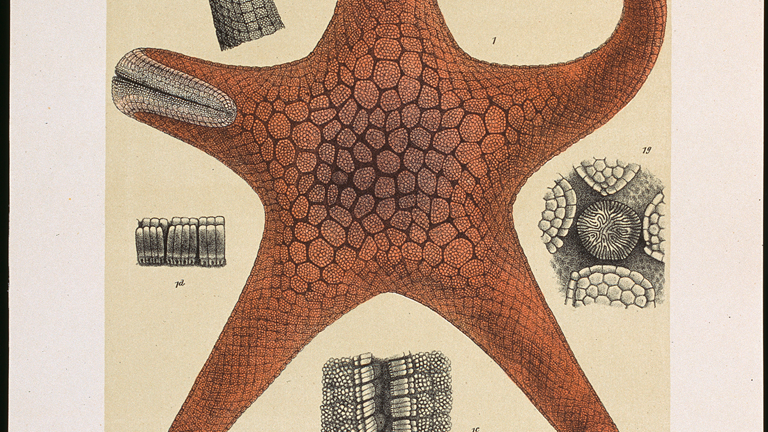
Echinoderms
Echinoderms are a phylum of spiny-skinned marine invertebrates. They include sea stars, brittle stars, sea urchins, sea cucumbers and sea lilies. Animals such as the Ocellate Seastar are among the largest invertebrates on sub-tidal reefs, and the family includes some of the most recognisable and colourful fauna of the Victorian coastline.
The body parts of echinoderms are based around pentameral (five part) symmetry and their three dimensional geometry makes them satisfying candidates for scientific illustration.
McCoy included four species of echinoderms in his Prodromus of the Zoology of Victoria: three species of sea star and a species of sea urchin. Unpublished plates reveal a further two species of sea urchins and another three sea stars. There are also a few sketches of echinoderms which do not appear to have been worked up into completed illustrations.
John James Wild, who was the official artist on the Challenger expedition which explored the ocean depths from 1872 to 1876, had a particular fascination with the radial symmetry of sea stars and sea urchins. His images of these animals are among the finest illustrations in the Prodromus.




